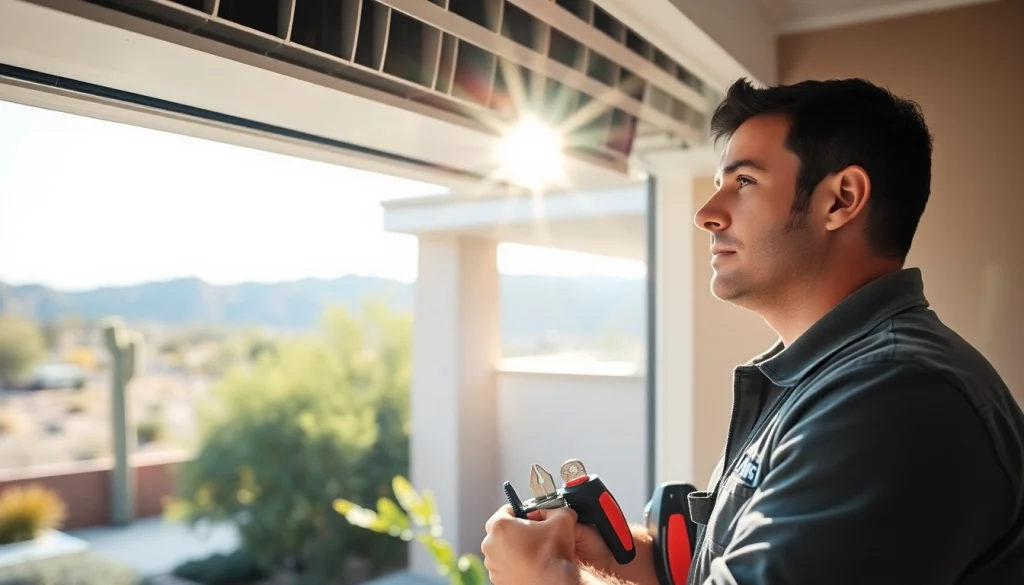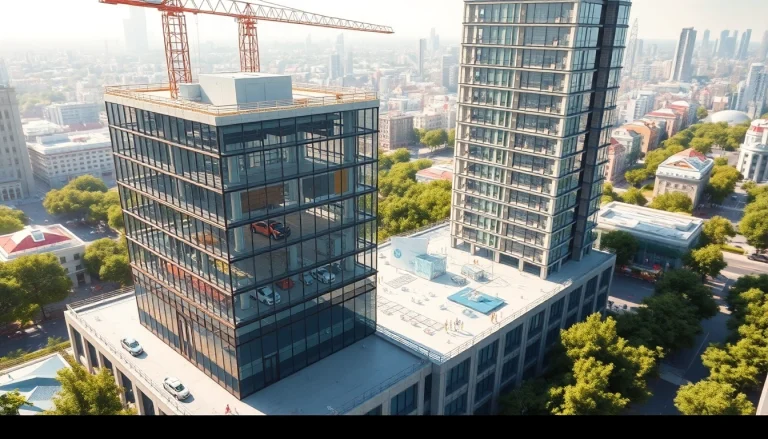
Understanding Scottsdale AC Needs
The desert climate of Scottsdale, characterized by its scorching summers and mild winters, demands a reliable air conditioning system for indoor comfort. As residents seek to maintain a temperate atmosphere in their homes and offices, understanding the specific needs that come with the region’s climate becomes paramount. This guide will delve into various aspects of scottsdale ac, including common issues, maintenance benefits, and installation processes, helping you make informed choices.
Climate Considerations for Scottsdale AC
Scottsdale experiences extremely high temperatures during the summer months, frequently soaring above 100°F. Consequently, residents rely heavily on their air conditioning systems to provide relief. Two major factors that impact AC performance in this climate are:
- Humidity Levels: Although Scottsdale is generally dry, afternoon thunderstorms can increase humidity, making it essential for air conditioning systems to work not only to cool but also to dehumidify the air.
- Temperature Fluctuations: The significant temperature drops at night can affect the efficiency of cooling systems, requiring proper insulation and effective cooling technology.
Common AC Issues in Scottsdale
A variety of issues can arise with air conditioning systems in Scottsdale due to its unique climate conditions. Some common problems include:
- Overworking Units: The excessively hot climate can lead to systems running continuously, which can cause wear and tear.
- Electrical Failures: Frequent usage can lead to electrical component failures, necessitating checks on wiring and electrical connections.
- Clogged Filters: Dust and debris prevalent in the desert can clog filters quickly, reducing efficiency and air quality.
Benefits of Regular Maintenance
To combat the common issues faced in Scottsdale, regular maintenance is essential. This includes:
- Increased Efficiency: Routine check-ups ensure your systems are functioning at optimal levels, lowering energy bills.
- Extended Lifespan: Regular service can significantly prolong the lifespan of your AC unit, saving costly replacement expenses in the long run.
- Improved Air Quality: Maintenance helps to prevent the accumulation of dust and allergens in your system, ensuring cleaner air supply throughout your home.
Choosing the Right Scottsdale AC System
Selecting the most suitable air conditioning system tailored to your needs can make a significant difference in performance and energy costs. Here are key factors to consider:
Types of AC Systems Available
Various types of air conditioning systems are available, including:
- Central AC: Ideal for larger homes, central systems distribute cool air through ductwork.
- Split Systems: Comprising indoor and outdoor units, split systems are great for homes without ducts.
- Heat Pumps: These systems can provide both heating and cooling, making them versatile for year-round comfort.
Energy Efficiency Ratings Explained
Understanding energy efficiency ratings is crucial when selecting an AC unit. Here’s what to look for:
- SEER Ratings: The Seasonal Energy Efficiency Ratio (SEER) indicates how efficiently an AC unit will operate over its lifetime. A higher SEER rating means better energy efficiency.
- Energy Star Certification: Systems with Energy Star ratings meet strict energy efficiency guidelines, aiding in reducing both energy consumption and costs.
Guidelines to Select the Right Capacity
Choosing an AC system that suits your home’s size is crucial. Oversized or undersized units can lead to inefficient cooling and increased energy costs. Consider these guidelines:
- BTUs: Measure your space’s needs in British Thermal Units (BTUs); use a professional to determine the best-fit capacity.
- Home Insulation: Evaluate your home’s insulation; better insulation may allow for a smaller system, while poor insulation might require additional capacity.
Installation Processes for Scottsdale AC
The installation of an AC system must be carried out meticulously to ensure functionality and longevity. Below are step-by-step processes to guide the installation.
Pre-Installation Checklist
Before installation begins, ensure you consider the following:
- Proper Assessments: Have a professional evaluate your space for best AC type and capacity.
- Permits: Confirm that you have acquired any necessary permits required by local authorities.
- Site Preparation: Ensure the installation site is free of obstructions, and all electrical connections are up to code.
Steps for Professional Installation
The following steps outline the installation process:
- Establish the outdoor unit’s location, ensuring it has enough space for proper airflow and maintenance access.
- Install the indoor unit and connect it to the outdoor unit via refrigerant lines and electrical wiring.
- Ensure proper drainage installation to avoid pooling water around the unit.
- Test the system thoroughly to confirm it operates efficiently and correctly.
Post-Installation Best Practices
After installation, follow these best practices to keep your system running effectively:
- Regular Maintenance: Schedule routine maintenance checks to keep the system running efficiently and avoid potential problems.
- Monitor Performance: Keep an eye on your system’s performance, looking for signs of inefficiency or unusual sounds.
- Educate Your Household: Inform everyone in the household on how to use the thermostat and the importance of keeping the filters clean.
Scottsdale AC Repair Services
In time, all air conditioning systems may require repairs. Understanding the signs and knowing when to seek help is essential for maintaining comfort during the hot months.
Identifying When Your AC Needs Repair
Watch for these red flags that indicate repair needs:
- Inconsistent Temperature: If some rooms remain hot while others are cool, it may indicate a refrigerant leak or other issues.
- Unusual Noises: Sounds such as grinding, squeaking, or rattling may signal mechanical problems requiring immediate attention.
- Increased Energy Bills: A sudden spike in energy costs can indicate inefficient operation, often due to malfunctioning components.
Common Repair Services Explained
When issues arise, understanding the common repair services can help:
- Refrigerant Leaks: Technicians can identify and repair leaks, ensuring your system can cool efficiently.
- Electrical Issues: This may include troubleshooting faulty wiring or replacing damaged components.
- Filter Replacement: Clogged filters can be replaced or cleaned as part of regular maintenance.
Emergency Repair Options in Scottsdale
During peak summer, AC failures can lead to uncomfortable situations. Emergency repair services typically offer:
- 24/7 Availability: Services available around the clock to address urgent issues.
- Quick Response Times: Professional technicians are dispatched promptly to minimize downtime.
- Comprehensive Checks: Emergency services often include thorough system evaluations to prevent future breakdowns.
Maximizing Your Scottsdale AC’s Lifespan
To ensure that your AC system serves you well for years, you’ll need to adopt certain practices that bolster its longevity and efficiency.
Maintenance Tips for Long-Term Performance
Here are actionable tips to enhance the durability of your air conditioning system:
- Regular Filter Changes: Change or clean filters every one to three months to maintain airflow and system efficiency.
- Seasonal Inspections: Schedule a professional inspection at least twice a year, before summer and winter, to catch potential problems early.
- Clean the Outdoor Unit: Regularly check the exterior unit for debris and wash it to maintain optimal airflow.
Seasonal Preparations for Your AC
Preparing your AC for seasonal changes can prevent breakdowns and enhance efficiency:
- Summer Readiness: Before high temperatures hit, ensure refrigerant levels are sufficient and the unit is thoroughly cleaned.
- Winter Preparations: In colder months, cover the outdoor unit to protect it from inclement weather and reduce maintenance needs.
Understanding Warranties and Service Contracts
Familiarize yourself with the terms of warranties and consider service contracts to protect your investment:
- Manufacturer’s Warranty: Typically covers defects and repairs within a specified timeframe.
- Service Contracts: Contracts can save money on routine maintenance and repairs, giving peace of mind and enhancing the reliability of your system.






